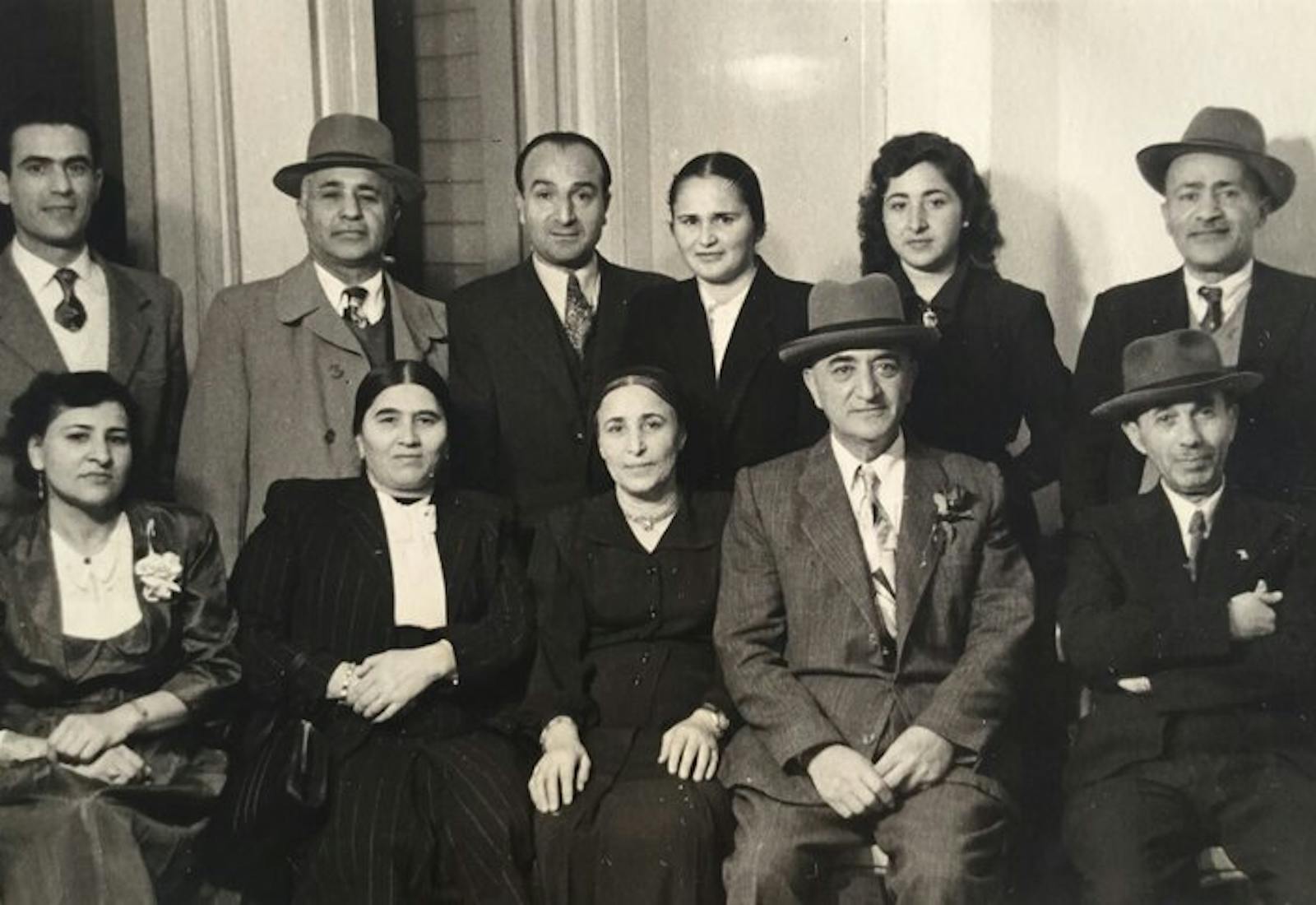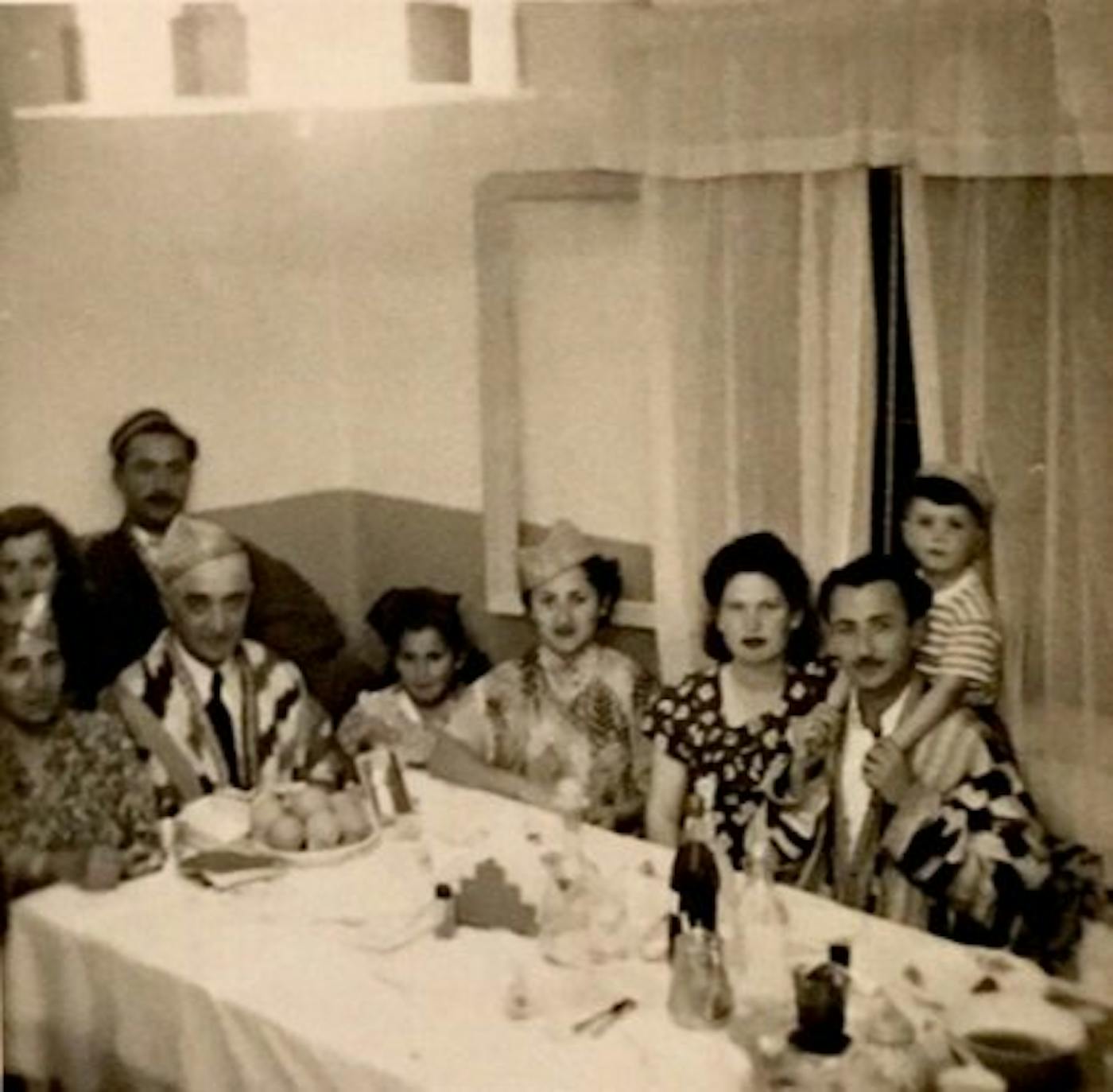Shared by Ilana Efrati


Artist and fashion designer Ilana Efrati’s early memories of the food of Samarkand, a city in modern day Uzbekistan where her family traces their roots, are from memorial gatherings for those who passed away in their community in Israel. In Bukharan tradition, these meals are meant as a way to celebrate the person who has passed. “It’s another [way] of thinking about death,” Ilana explains. It is a celebration of life.
Up until Ilana was five years old or so, her mother Shulamit only prepared simple food for the family like meatballs and stewed meats with potatoes, she says. These were dishes that Ilana’s father, a Sephardic man who grew up in Jerusalem, liked. Seeing that Ilana enjoyed Bukharan flavors at the memorial meals, Shulamit started to adapt her cooking to reflect her family’s history. She made dumplings with thin skins and rich vegetable soup with beets.
She also made oshi bakhsh, a dish of rice, meat, and fresh herbs. “The recipe gives the atmosphere of the season,” Ilana explains. In spring, lamb might be used. If pomegranates are in season, as they often are around Rosh Hashanah, they will be used to finish the dish and the cook will know it is the end of summer. “This is a philosophy of cooking that touched me very much,” Ilana explains, and one that reflects the culture of the region of Central Asia where Bukharan Jews lived for generations — and a few still do.
Ilana’s family went back and forth between Samarkand and Jerusalem for nearly 50 years, between the middle of the 19th century and the early 20th century, on horseback. Her great-grandfather Zion and his father Abraham Asherov were the first arrivals and among the founders of the “Buchari Streets,” of Jerusalem, which comprised the first modern neighborhood outside of the old city’s walls, a family website explains.
Still, part of the family remained in Samarkand for a time. Zion’s son, Hananya who was Shulamit’s father, was born there but grew up on the stories of Zion’s travels to Jerusalem. Coming from Samarkand where Jews and Muslims lived in close quarters peacefully, Zion referred to his journey to Jerusalem as Haj, the word in Islam for one who makes a religious pilgrimage to Mecca.
In 1927, the family completed their move, holding close to the traditions, flavors, and sounds of Samarkand. They built a rich life in Jerusalem and later lived next to an orange grove in Petah Tikva that they owned. Like in Samarkand, the family built two kitchens in Petah Tivka, one inside for winter cooking and another outdoors with a taboon for summer feasts. They enjoyed a slower paced lifestyle with large meals served in the middle of the day, they made their own grappa, and celebrated Bukharan clothing and craftsmanship. Generations later, this lifestyle influences Ilana’s work and life, which she splits between Tel Aviv and Umbria, Italy where she maintains a garden and finds inspiration.
Shortly after the founding of Israel, however, Shulamit wasn’t certain that she wanted to live in this lifestyle. In 1949 she met her future husband Yitzhak. “He offered her a very different lifestyle from that of her family’s: local, simple, and at times austere. But she wanted to be local, not ‘Samarkand’ or ‘Bukhara,’ and found his promises very attractive,” explains the family’s website.
Years later, Shulamit started to return to her roots. As she started to cook Bukharan dishes for her family, Ilana enjoyed them, but didn’t help prepare them. Still, she absorbed some of them. The recipes were finally written down and passed to another generation when Ilana’s daughter Or Rosenboim was in middle school. Or spent the afternoons with her grandmother and for a school project, started to document Shulamit’s recipes as well as recipes from her other grandmother from Riga, Latvia. As an adult Or created The Migrant’s Supper Club, a culinary project in London that explores migration routes in Europe, the Mediterranean, and drawing on her family’s roots, Central Asia.
Continuation of tradition is an integral part of this family. When Shulamit passed away, Ilana prepared a memorial meal for her mother. “I continued this tradition I saw as a child,” she says. She gathered people who knew and loved Shulamit and together they cooked and ate Shulamit’s recipe for oshi bakhsh along with a thin bread from a Bukharan baker. They sang songs Shulamit loved and remembered her.

